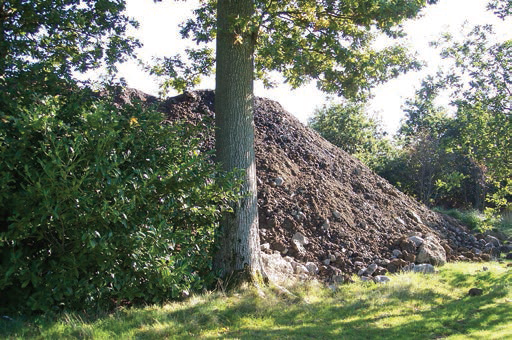Sports turf management specialist, Eamon Kealy sheds some light on the planting and management of trees on Irish golf courses
As a golf course ages, its character changes. These changes aren’t always in keeping with the golf course architect’s original vision, and managing trees within the original design parameters can be a tough task. If allowed to grow freely, trees can impact negatively on the playability of a golf course by narrowing fairway landing areas or blocking tee shots. But if successfully managed, the golf course superintendent can implement a strategy that benefits the course both agronomically and ecologically. Straying from the original design or failing to produce and deliver a sustainable management strategy can lead to trees being planted in the wrong places, too close to fairways, tee boxes and greens. This inevitably results in increased agronomic management and higher maintenance costs.
START WITH A PLAN
Every golf club needs a tree management plan which lays out the club’s strategy and policies regarding existing and proposed trees on the course. These plans can contribute to the course’s longevity but can also be divisive among members.
A robust plan will include input from key professionals, including the original golf course architect (if possible), course agronomist, arborist, golf course superintendent and club manager. It should clearly identify and analyse the tree species and categorise their environments. It will also recognise situations where tree plantings have failed and note the conditions that have led to this. One way to do this is to keep a photographic record of the course so that changes can be tracked over the years. This will help members visualise the extent the course has strayed from the initial design concept.
PRESENTING A TREE MANAGEMENT PLAN TO THE MEMBERS
Traditionally, greens committee members want to leave a legacy of their time in charge by planting trees. In some cases, specimen trees are bought in at great cost to fulfil a committee member’s vision. This vision can be in contrast to the original design philosophy of the course and can present a serious challenge to anyone preparing and presenting a plan.
When presenting a management plan to the members, highlight the benefits of it clearly and concisely. The plan should centre around preserving the integrity of the golf course design. Concentrate initially on the advantages of preserving specimen trees of significance before highlighting the need for tree removal. Such planning will increase the chances of your tree management plan being implemented.
SUCCESSFUL IMPLEMENTATION
Many golf course tree management strategies fail to be implemented or approved as they focus too heavily on tree removal. If you are in the process of strategy development be sure to impress the benefits of improving the health of existing species, and where trees are suggested for removal ensure they backed up with clear reasoning on how the course will benefit.
NEW PLANTING SCHEMES
New planting schemes should revolve around whips rather than mature trees. While mature trees initially provide immediate impact, they often suffer from transplant shock and don’t fulfil their potential for many years (if ever). They also require constant maintenance. Watering during the summer months is required for the first two to three years. If this is neglected, the result is a poorly formed tree with leader dieback. Do not plant more trees than the greenkeeping team can maintain during the driest part of the summer. Heavy stakes can also be required to secure large trees. These are often unsightly and are usually not removed in a timely fashion. This can leave the tree dependant on the stake, while not developing a suitable strong root system to hold it in position. As a general rule, don’t stake trees unless it is absolutely necessary.
Planting smaller trees in groups is cost-effective and the plant material can be formatively pruned to suit the golf course. Removal of weak or poorly formed trees is always an option when smaller trees are planted heavily in an area. Don’t be afraid to plant various sizes of plant material within the one planting as this will increase the natural look of the scheme.
DESIGN CONSIDERATIONS
Thoughtful tree planting should increase the playability and add to the overall appearance of the course. Make sure that the new planting plan fits the overall design philosophy of the course. Try to use new plantings to enhance habitat corridors throughout the course linking out of play areas and watercourses. If possible plant trees with Irish provenance and which relate well to surrounding and provide maximum opportunity for biodiversity creation. Give consideration to underplanting with shrubs or biennial species to provide cover for young trees. These shrubs can be removed later or will simply be out-competed as the trees grow. This will also reduce the need for herbicide application.

INADVERTENT DAMAGE FROM CONSTRUCTION WORKS. PHOTO BY EAMON KEALY
STRATEGIES FOR SUCCESSFUL PLANTING SCHEMES
|
PROTECTING YOUR INVESTMENT
Once a planting scheme starts to mature, it is imperative that the golf course superintendent protects those trees in the long run. Ensure all greenkeeping staff keep clear of tree trunks while mowing. Remove tree ties and stakes as soon as possible to ensure the tree develops a healthy trunk calliper and root system. Train greenkeeping staff in the art and science of pruning. If the golf course has a trained horticulturist utilise them if possible. Annual formative pruning will guarantee young trees develop to their full potential. Make sure all pruning cuts are made cleanly and correctly. Use the natural target pruning method to prevent stub and flush cuts.
Protect trees from construction damage. Do not allow contractors to compact areas beneath mature trees. Implement an aeration programme in areas of heavy traffic flow. Monitor tree planting schemes annually and identify trees that need transplanting. Undercut trees if possible in the years prior to transplanting to increase the success rate of transplanted trees. ✽
 EAMON KEALY M.Hort.Sc is a lecturer in horticulture, specialising in sportsturf management, at the Institute of Technology Blanchardstown. ITB offers part-time and full-time courses in horticulture. EAMON KEALY M.Hort.Sc is a lecturer in horticulture, specialising in sportsturf management, at the Institute of Technology Blanchardstown. ITB offers part-time and full-time courses in horticulture.
For more information see www.itb.ie or email info@itb.ie |





